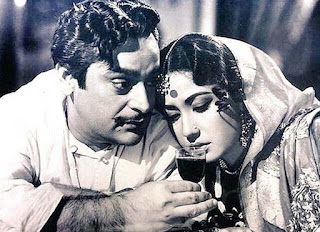Saroj Khan (22 November 1948 - July 3, 2020), started her career as a child artist at the age of three with the film Nazarana as child Shyama. She worked as a background group dancer in many dance songs in the late 50s.
She got her break as an independent choreographer, with Geeta Mera Naam (1974).before that she was assistant to dance director B. Sohanlal. Her first breakthrough came with Subhash Ghai's Hero (1983), but it was Sridevi's Nagin dance in Nagina (1986) where she was noticed for her talent, followed up by Mr. India. Next, she worked with Madhuri Dixit in 'Ek Do Teen' number, Tezaab (1989), and later in Khalnayak, where she choreographed the Choli Ke Peeche' number.
Sridevi and Madhuri Dixit were her favs. dancers in Bollywood. Sridevi danced to her steps in Mr. India's Hawa Hawai and Chandini's 'Mere Hathon Mein'.Madhuri Dixit starting with the hit Ek Do Teen in Tezaab (1988), Tamma Tamma Loge in Thanedaar (1990), and Dhak Dhak Karne Laga in Beta (1992).
With a career span of over forty years, she choreographed more than 2000 songs Many of her choreographed songs have been iconic. Saroj Khan was the recipient of the most National Film Awards for Best Choreography with three wins. She was the first recipient of the filmfare Best Choreography Award. Filmfare instituted this award after watching the excellent choreography and audience response to Khan's song "Ek Do Teen" from Tezaab. Saroj Khan went on to have a hat-trick at the Filmfare awards winning consistently for 3 years from 1989 to 1991. She also holds the record for winning the most Filmfare Best Choreographer Awards, winning 8 times.
She was admitted to Guru Nanak Hospital at Bandra, Mumbai on June 17, 2020. She was admitted with breathing complaints, and died of cardiac arrest at 1:52 am early on Friday, July 3, 2020.
Some of her Iconic Choreography
Song of Hero (1983)
Song of Nagina (1986)
Song of Mr India (1987)
Song of Tezaab (1988)
Song of Chandni (1989)
Song of Beta (1992)
Song of Khalnayak (1994)
Song of Hum Dil De Chuke Sanam 2000
Song of Devdas 2003
Song of Guru 2008


















